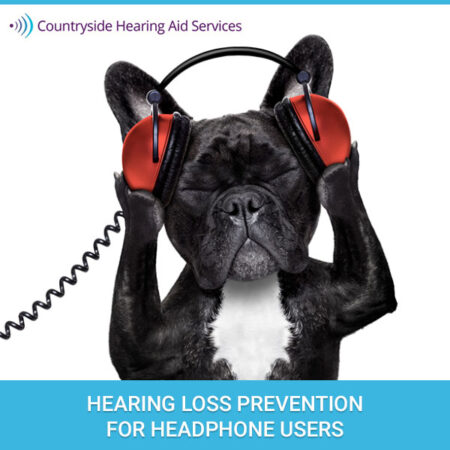 Headphones and earbuds have become an essential part of everyday life for many people. However, that doesn’t mean that they can’t pose a risk to your hearing. Both headphones and earbuds can damage your ears and eventually cause hearing loss if they are used unsafely, and especially if you are at an increased risk for hearing loss. In this article, we’ll be going over some of the reason headphones and earbuds can be dangerous, as well as some of the steps you can take to mitigate that risk.
Headphones and earbuds have become an essential part of everyday life for many people. However, that doesn’t mean that they can’t pose a risk to your hearing. Both headphones and earbuds can damage your ears and eventually cause hearing loss if they are used unsafely, and especially if you are at an increased risk for hearing loss. In this article, we’ll be going over some of the reason headphones and earbuds can be dangerous, as well as some of the steps you can take to mitigate that risk.
What are the Risks of Headphone and Earbud Use?
According to the World Health Organization (WHO), over a billion young people are at risk for hearing loss due to unsafe noise exposure, but why exactly are headphones so dangerous? The main danger comes from the fact that they can play a loud volume directly into your ear. Overexposure to loud noises can damage the delicate inner part of your ear which can lead to hearing loss.
Earbuds are especially dangerous, as they are placed directly inside the ear. Such a narrow space means that the sound waves have no time or space to disperse or become less intense by the time they hit the inner ear. Listening to earbuds for a prolonged amount of time and/or at a high volume can therefore be very dangerous for anyone trying to prevent hearing loss.
Headphones that sit outside the ear can oftentimes be a safer option than earbuds, but they still pose a risk. Since they sit outside the ear, there is more of a buffer between your ear and the sound, but high volumes can still be dangerous.
How to Stay Safe While Using Headphones
There are several steps you can take to stay safe and still be able to listen to your favorite music. One easy way is by investing in a pair of higher quality headphones. Two types of headphones can help you have a good listening experience while limiting the excess noise: noise-canceling headphones, and noise-isolating headphones. Noise-canceling headphones cancel out low-frequency sounds, while noise-isolating headphones create a physical seal between your ears and outside sounds.
It’s also important to know what volumes are safe for listening. Experts in hearing loss recommend not listening to anything louder than 85 decibels (dB) through headphones. Of course, most of us don’t have access to a decibel meter, which is where the 60/60 rule can be applied: Don’t listen to your music through headphones at more than 60% of your devices volume capacity, and don’t listen for more than 60 minutes.
Children
Children’s’ ears are still developing, so they are particularly at risk of damage from headphones. The WHO recommends that children don’t use headphones whenever possible and that if they do have to use them, make sure to keep the volume as low as possible. Regular hearing tests are common in schools but keep an eye on children and get an additional hearing test if they start showing signs of hearing loss.
Conclusion
Headphones are a staple of society in the modern age but being aware of the risks they pose is crucial to preventing hearing loss. If you’re concerned about hearing loss or think you or a loved one may need a hearing test, contact Countryside Hearing Aid Services.
Picture Credit: 123rf.com